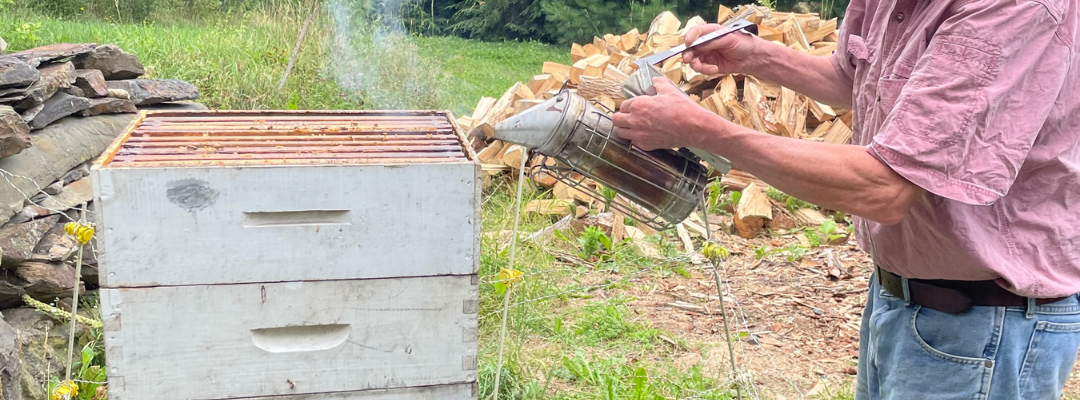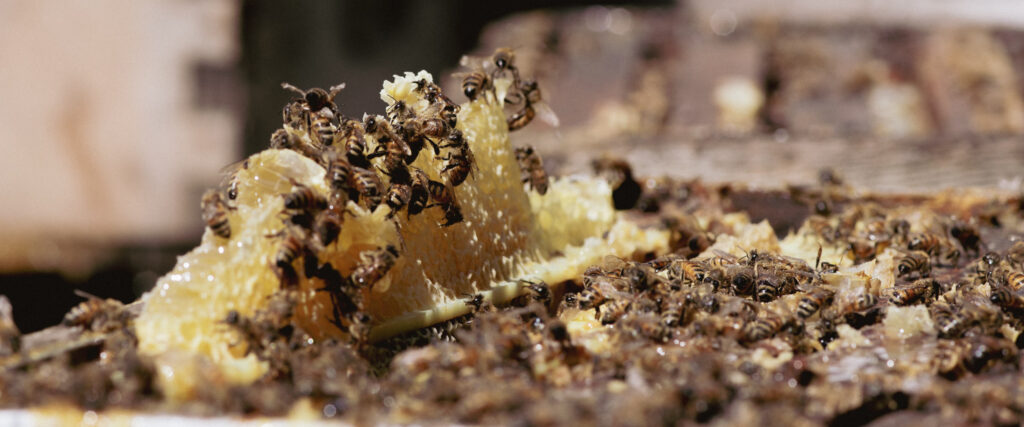
The somewhat cheeky, highly anthropomorphized guide to honeybees.
Apiary (n.): a collection of beehives, also known as a beeyard. In most places, these need protection from bears, skunks, and other wildlife in the form of electric fencing. With all respect to Pooh, they are after the bee larvae more than the ‘hunny’, though you have to assume that is a pretty sweet little grub.
Bee Nuc (n.): pronounced nuke; often referred to as the “nuke,” or “nuc,” it is a colony of bees that includes a queen. Think of it as a nuclear family, but with one kick-ass mom (see: queen bee), a few, mostly useless dads (see: drones), and lots of daughters with a long chore list (see: worker).
Honey Supers (n.): the box and the frame inside where the bees form beeswax. Some beekeepers like to keep it straightforward and paint them white, whereas others look like a Caribbean village of bright hues. Our friend Dan Winter has an array of different colors for his boxes. When we asked if the color scheme was some important aspect of beekeeping he explained, “They were the paint colors that were on sale.”
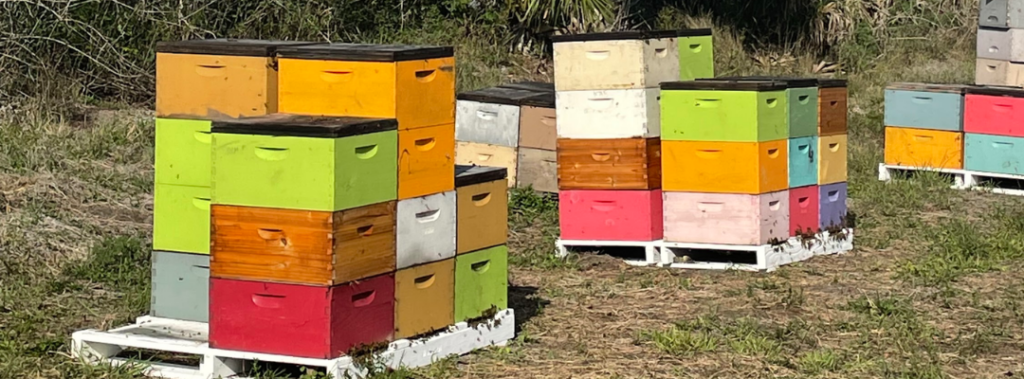
Queen bee (n.): Larger and longer than other bees in the brood, she is the supreme diva. All of the other bees work for her comfort and good health because she is the key to their continuation as a group. The queen is the only bee who mates with drones and lays eggs for future broods. Like the queen bee from your sixth grade class, the bees in her group will follow her if she leaves for a better setup. Also like her human counterpart, she will take down any other queens in her midst (see: any Real Housewives franchise). We can’t help but admire her moxie, so we named a cocktail in her honor.
Drone (n.): male honey bee. They have one job and that is to mate with the queen. They don’t work or make honey and they can’t sting. Typical.
Worker (n.): female honey bee that does ALL the work. She collects pollen and nectar, makes honey, keeps the brood at the right temperature, cleans the brood cells, and makes the wax for cells. As far as we know, she does not have a special day where she gets breakfast in bed and thank you cards. She dies after 4-6 weeks.
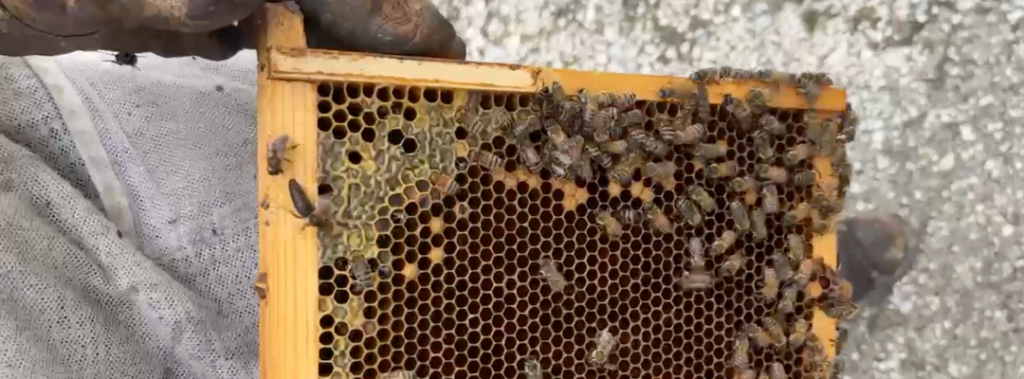
Pollen (n.): the white, yellow, red, or orange dusty-looking stuff in flowers that is basically plant sperm.
Nectar (n.): the sugary substance secreted by plants, often from flowers. Some flowers have a “nectar guide,” which are color marks believed to direct insects to nectar sources.
Pollen vs. Nectar
There is considerable confusion about how bees interact with these two substances so here is the skinny: bees collect pollen, which is rich in protein, to feed themselves and their pals back at the hive. They collect nectar to turn into honey to store up food for the winter when pollen is not readily available. Whether collecting either, they pick up pollen on their bodies and bring it to other flowers which results in pollination and ultimately food. We are happy that they pick up nectar to create delicious honey, but in the bigger picture, distributing pollen results in nothing less than sustaining life. Our bee guide, Todd Hardie, and others like to refer to honeybees as the “angels of agriculture.” When we yammer on about how important honey bees and other pollinators are, we aren’t just selling honey.
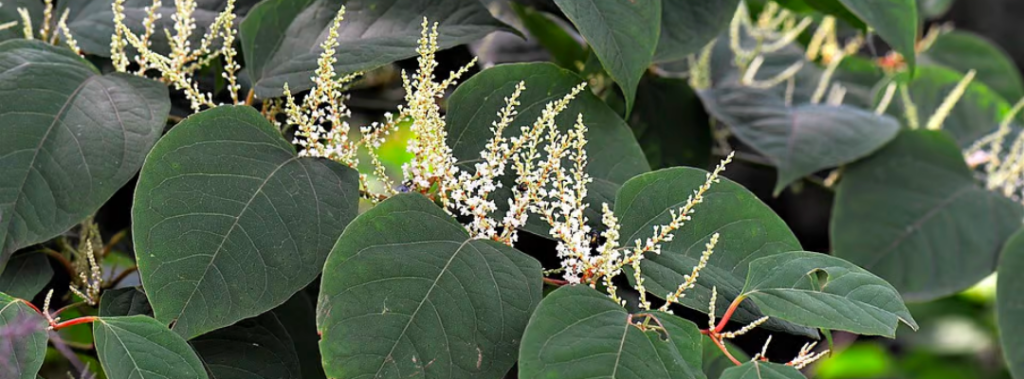
Propolis (n.): this is basically bee glue. Bees gather sap or resinous materials collected from trees or plants and mix it with saliva and beeswax. They use it for repairs in the beehive, sort of like DIY grout.
Beeswax (n.): a mixture of organic compounds secreted by four pairs of special glands on the worker bee’s abdomen and used for building comb. Makes for very nice candles. Also used for deferring children asking about Christmas presents, as in “none of your beeswax”.
Pheromones (n.): chemical substances secreted from glands and used as a means of communication. Some pheromones say, “danger!,” while others croon, “hey, baby.” Bees also communicate with dances.
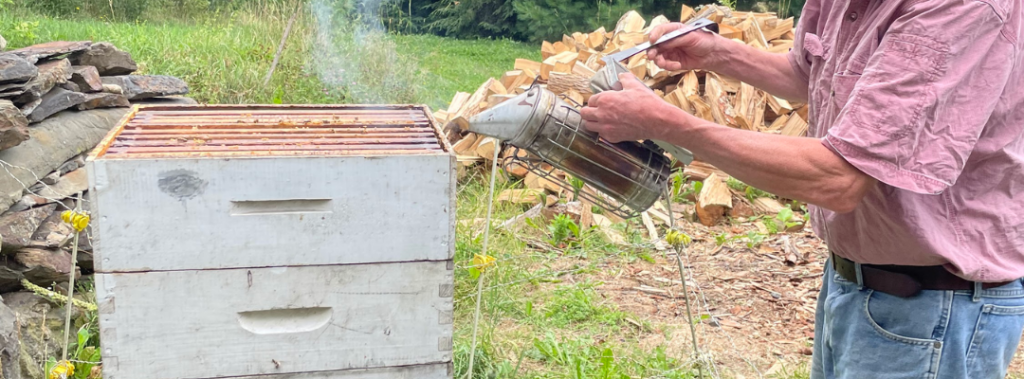
Enjoyed the read? Check out our maple sugarmaker’s lingo in our Tapping 101 blog!

